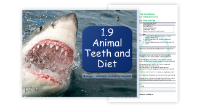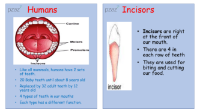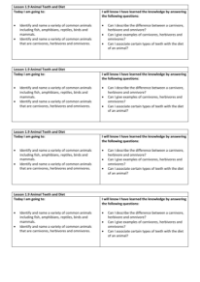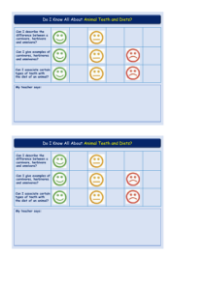Animal Diets - Teacher Explanation

Science Resource Description
Welcome to lesson 1.9 of the Year 1 unit on animals, including humans, where we delve into the intriguing topic of animal diets. The national curriculum sets out clear objectives for this lesson, which include pupils being able to identify and name a variety of common animals such as fish, amphibians, reptiles, birds, and mammals, and to describe and compare their structures. A crucial aspect of this lesson involves understanding the different types of diets animals have, categorising them as carnivores, herbivores, or omnivores based on the shapes and functions of their teeth. Pupils will be engaging in practical activities, including handling scissors and modelling clay, so it's important to observe health and safety measures such as careful handling of scissors and thorough hand washing after using modelling clay.
The lesson is rich with cross-curricular links, integrating geography through the identification of animals' native countries, art through drawing animals and their food, and design and technology (ADT) through making model teeth. The activities are hands-on and interactive; pupils will start by examining their own teeth, identifying different types, and noting any variations among their peers. Moving forward, they will explore the reasons behind the various shapes and sizes of teeth, linking these to the animals' diets. By examining animal skulls, pupils will apply their knowledge to determine whether an animal is a carnivore, herbivore, or omnivore. The lesson culminates in a creative art task where pupils craft models of different animals, classify them according to their diets, and perhaps even create food items to illustrate what each animal eats. This engaging and educational session promises to enhance pupils' understanding of the animal kingdom and the importance of diet in animal physiology.





